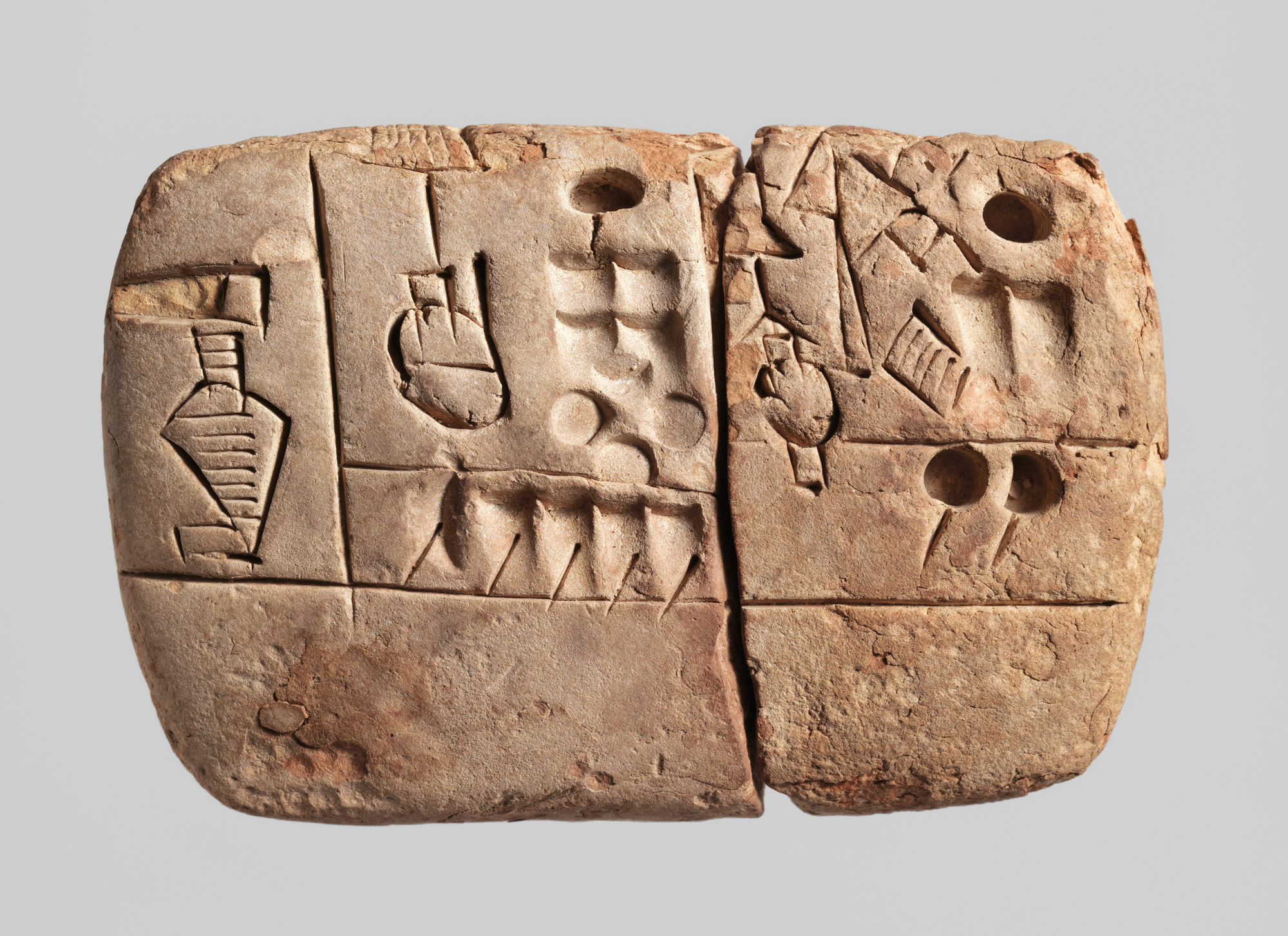Where is the knowledge we have lost in information?
- T. S. Eliot, Chorus I from The Rock
. . . literacy is still the only bulwark against the dissolution of language into ‘information systems.’
- Ivan Illich and Barry Sanders, Preface to ABC: The Alphabetization of the Popular Mind
The technology that emerged to meet those needs – writing – filled a prosaic but essential purpose: accounting. The impetus behind its invention was not a desire to faithfully record language, but to record trade transactions, crop yields, and taxes – to record and preserve information, not language.
- Amalia E. Gnanadesikan, The Writing Revolution: Cuneiform to the Internet
 |
| Tablet, 3100–2900 BC. Image: Metropolitan Museum of Art |
Almost four millennia after the Mesopotamian clay tablet, here is another example of the dissolution of language into information. This is the first canon table from the Lindisfarne Gospels, produced in northern England, c AD 700.
 |
| British Library MS Cotton Nero D.iv, fol. 10r. Image: British Library |
The four gospels have been broken up into numbered sections (following a system devised by Eusebius of Caesarea in the 4th century) and the numbers for parallel sections have been arranged in tabular format. But the decorative scheme of the table invites you to approach this book as if you were entering a building with beautifully ornamented pillars and arched ceilings. The text of the gospels is presented as meaningful space: not so much a linguistic structure, as an architectural one. The canon table is a guide to the text: precisely by presenting the gospels as an information system, it suggests a way of navigating knowledge; by reminding the reader of sacred space, it hints that the purpose of reading is the attainment of wisdom.
Technology is a product of the human imagination. Writing is a technology for encoding information. As T. S. Eliot points out, information is by nature reductionistic. It leaves out a great deal that should be important to us as human beings: knowledge and wisdom, for example. But seeing the information value in, say, medieval texts is not to reduce them to mechanisms; rather, it is a powerful way to remind us of the human dimensions of historical technologies. Throughout history, people have repeatedly felt that information threatens to overwhelm the essentials of humanity. The best way to deal with that anxiety is not to resist information technology, but to understand it.
Yin Liu
References and Further Reading
‘Administrative tablet [Southern Mesopotamia] (1988.433.3).’ In Heilbrunn Timeline of Art History. New York: Metropolitan Museum of Art, 2006.
Brown, Michelle P. The Lindisfarne Gospels: Society, Spirituality and the Scribe. Toronto: U of Toronto P, 2003.
Eliot, T. S. Collected Poems 1909-1962. London: Faber, 1963.
Gnanadesikan, Amalia E. The Writing Revolution: Cuneiform to the Internet. Oxford: Wiley-Blackwell, 2009.
Illich, Ivan, and Barry Sanders. ABC: The Alphabetization of the Popular Mind. New York: Random House, 1988.
Spar, Ira. ‘The Origins of Writing.’ In Heilbrunn Timeline of Art History. New York: Metropolitan Museum of Art, 2009.
No comments :
Post a Comment